Are you working to try and calculate the amount of THC or CBD in your homemade cannabis creations? If you know the potency of your flower and how much you used, I can help with the math! Use my free edible calculator to help you guesstimate the potency of your edible recipes, topicals, and other homemade creations.
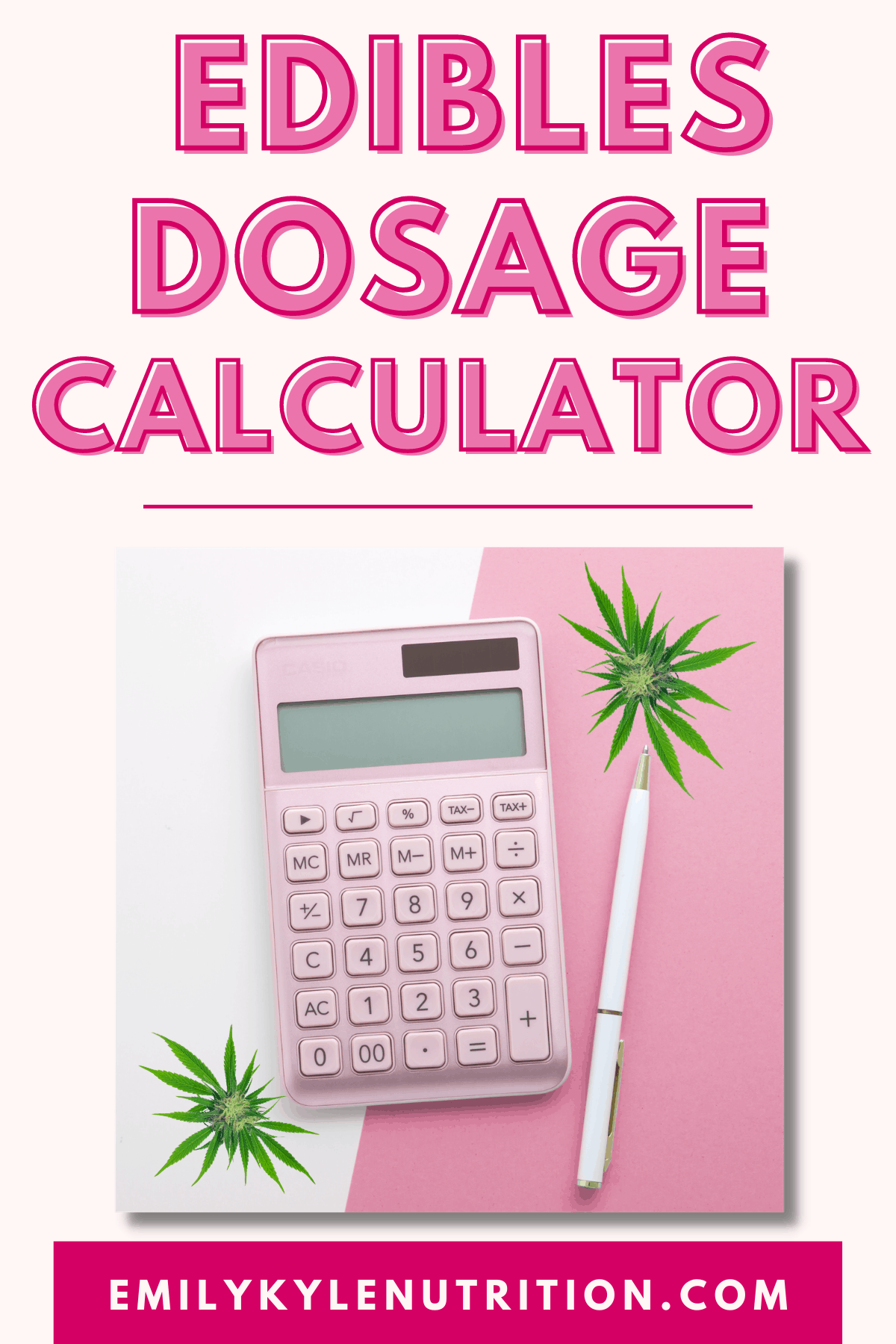
Table of Contents
Features
- A free tool designed to help you estimate the potency of your homemade edibles
- Accounts for the loss associated with decarboxylation and your infusion or extraction material
- Hate the math? Want to make it easy? Skip the hard work, order high-quality cannabis products from my shop, and have them delivered straight to your door – now shipping across the United States!
📲 Use The Calculator Here
Step 1: Calculate Potency For the Entire Batch
In this first section, you can calculate the potency of your entire batch of an infused product, such as cannabutter or cannabis oil.
This large batch can later be used in your recipe using the second section of this calculator.
If you’re not sure what information to put here, scroll down and read the How to Use This Calculator section below.
Starting Amount of Cannabis Product in Grams |
|
THC/THCA % |
|
CBD/CBDA% |
|
Type of Oil or Alchol Used |
|
Amount of Oil or Alcohol Used in Cups |
|
Account for the loss associated with Decarboxylation?Check this box if you decarbed your product and want to account for the natural loss associated with the process. |
Potency Results For The Entire Batch
Total mg of THC |
2800
|
Total mg of CBD |
700
|
Total mg of THC per teaspoon |
29.17
|
Total mg of CBD per teaspoon |
7.29
|
Step 2: Creation Portions/Servings
In this section section, you can add the infusion or extraction you made in step one directly into any recipe.
Number of Teaspoons Used in Your Recipe |
|
Total Number of Servings In your Recipe |
POTENCY RESULTS PER SERVING
Total mg of THC in entire recipe |
145.83
|
Total mg of CBD in entire recipe |
36.46
|
Total mg of THC in per serving |
14.58
|
Total mg of CBD per serving |
3.65
|
How to Use This Calculator
While a calculator is no replacement for lab testing, this tool will help you get a guesstimate of the potency of your cannabis infusions and extractions.
Unlike other online calculators, this calculator hopes to provide more accuracy by accounting for the losses associated with decarboxylation, infusion oils, or extraction solvents.
Before using this calculator, you will need to know two things:
- The amount of cannabis you are putting into the recipe in grams – remember, there are 28 grams in one ounce
- The percent of THCA / THC or CBDA / CBD present in your material – you can input other cannabinoids here if desired
If you have these numbers available, you can get started with the calculator below; the results are highlighted in pink.
Why You Will Love This Tool
Hello and welcome to my dosage calculator designed to help you estimate how much THC or CBD is in your edibles and homemade recipes.
If you’re like the members of my Well With Cannabis Community – chances are you love making your own cannabis-infused edibles!
Not only can you save money when you make incredible recipes at home, but you can also control the ingredients and strength of your edibles.
But how exactly do you determine the potency of your edibles?
If you know the cannabinoid content of your material and how many grams of weed you’ve used, you can use this handy edibles dosage calculator to do the math for you!
This edibles calculator will then help you determine your own edibles’ CBD or THC content based on the number of servings made.
Not only does this help you determine the THC potency of your homemade marijuana edibles, but it also helps you avoid a dose that is too high, which could result in unpleasant side effects.
Frequently Asked Questions
This is the hardest part for many people! If you purchased cannabis flower from a licensed dispensary, that flower should be accompanied by lab testing, which shows the percent of THC or CBD in the flower. Unfortunately, different labeling regulations do not make this information universal. If you grew your own cannabis at home, knowing the potency of THC or CBD will be impossible without lab testing. You can, however, research strain guides that provide a general idea of the total cannabinoids in a specific strain.
If you’re working with dried cannabis flower that has not been decarbed, you will be inputting the value as THCA and checking the checkbox to account for the loss of decarboxylation if you decarb. Suppose you are working with a prepared cannabis product that already has THC present because it has already been decarbed. In that case, you will enter the value as THC and not check the checkbox to associate for the loss of decarboxylation (because it has already occurred). If you have both numbers, simply run the calculation twice, once for each option.
If your concentrate already comes with a milligram dosage on the label, you do not need to use this calculator. Simply divide the total THC milligrams by the final servings in the recipe you made. For example, if you have a concentrate labeled with 750mg of THC for the entire syringe and add that syringe to a cookie recipe that makes 24 cookies, you would use the following equation: 750/24 = 31.25mg THC per cookie.
Great question! We are using different values to account for extraction efficiency. For example, olive oil will have a different extraction efficiency than coconut oil. A fat-based product will have a different level of efficiency than alcohol, which is what we are trying to account for here.
If you’re calculating the THC or CBD dosages for a cannabutter recipe, it shouldn’t matter whether you use regular butter or unsalted butter. What will matter is the amount of butter you use.
The correct dosage is unique to each person, as we all have endocannabinoid systems that control our tolerance level. If you have done the math above to calculate the total mg of THC but still feel unsure where to start, check out my guide to dosing edibles safely and effectively. I recommend starting with the microdosing method. As a good rule of thumb, low doses of 1-3 mg THC are a good place to start. If you are feeling lost, you can also check out my beginner’s guide to using cannabis. If you’re feeling and need to know you’re consuming an exact dose, my most popular edible product, Micro Gummies, can help you get started.
A segment of the population reports feeling no effects from cannabis consumed in edible form or only when a very high dose is consumed. This can depend on a variety of factors, including your individual metabolism, what you’ve eaten, the decarboxylation process, and the potency of edibles consumed. If you do not feel the effects of edibles despite consistent doses and correct time intervals, check out this guide. Ultimately, you may need to explore more efficient ways to consume cannabis, such as cannabis-infused oil used as sublingual tinctures.
My goal in providing this calculator is that you can avoid consuming too high of a THC dose. Consuming too much THC is uncomfortable and can alter your ability to perform basic functions. Adverse effects may include dry mouth, racing heart, and even a panic attack. That is why it is important to exercise a side of caution and use the right amount of cannabis before getting started. Seek professional medical advice if needed.
I have had requests for a topical dosage calculator and a tincture calculator. Still, this calculator here can work and is a great option for calculating total THC for both tinctures and topicals.
This calculator is for educational purposes only, but if you are looking for the best way to take your cannabis education to the next level, my Edibles Made Easy Course was designed for you! This course can transform any home cook into a cannabis chef in a few simple steps. Consider it your complete marijuana handbook for the kitchen!
Shop My Most Popular Products
Shop with Emily
Shop Now: Bliss Caramels
Shop with Emily
Shop Now: Bliss Micro Gummies
Shop with Emily
Shop Now: Relief Stick
Shop with Emily

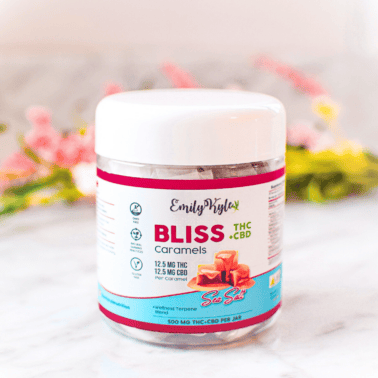
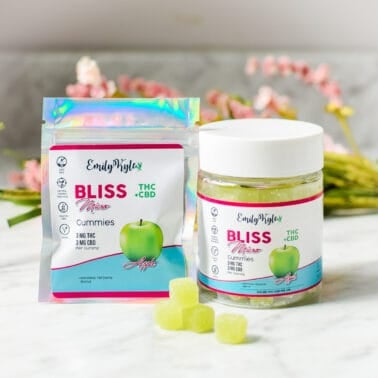
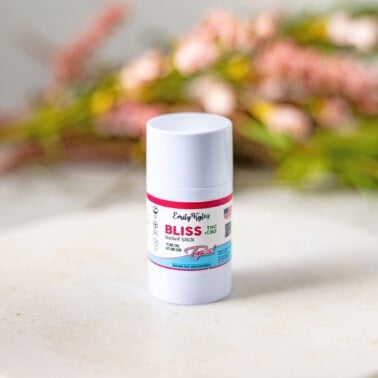

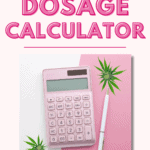








Hello Peggy! Based on the information you’ve shared – using 2 cups of sugar, 1 cup of 190 proof alcohol, and 14g of flower at 25% THC – and assuming you’ve followed the calculations correctly, a potency of around 60 MG per teaspoon for the entire batch does sound within the realm of possibility. However, it’s always good to approach these calculations with a bit of caution, as the actual potency can vary based on a few factors, including the efficiency of your extraction. When it comes to coating your gummies with the cannasugar, calculating the added potency can be a bit tricky since it depends on how much sugar sticks to each gummy. A practical approach would be to start by estimating the amount of sugar (in teaspoons) that coats a single gummy. Once you have that, you can multiply it by the potency of your sugar (60 MG per teaspoon) to get an estimate of how much THC is added to each gummy. Remember, when making and consuming edibles, starting with a lower dose and going slow is key to finding the right balance for you, especially when combining different infused ingredients like gummies and sugar.
And of course, sharing your creations with others involves clear communication about their potency to ensure everyone can enjoy them safely and responsibly. I hope this helps clear things up a bit! If you have any more questions or need further assistance, feel free to reach out. Happy cooking, and I can’t wait to hear how your gummy adventures turn out! 🍬
Hi Emily, I love your site. The calculator was exactly what I was looking for. A question please. I use one cup of coconut oil to mix with my buds, and after slow cooking for 6 hrs and filtering I have 3/4 cup of coconut oil. The rest has been filtered out or locked in the flowers. So the question is what number of teaspoons do i use in my recipe 36 which I have left or 48 which I started with. In other words have I retained all the THC I started with in the oil or is some of it lost in buds and tar that I discard. Thanks so much for your site. Arthur.
Hi Emily,
Just wondered if you could provide another option on the solvents? I live in Florida where the highest potency EverClear is banned, along with many other states. Right now, it seems that the only option on your calculator is 191 proof grain alcohol. How can I adjust for the difference between 151 Proof Everclear (that I can legally purchase) versus the high-potency Everclear?
Hi William. Exploring the details of solvents and cannabinoid extraction can greatly improve your understanding of how the different strengths of alcohol affect the process. Simply put, alcohol proof indicates its water content; the lower the proof, the more water it has. For example, a 190-proof alcohol is 95% alcohol and 5% water, while a 151-proof is about 75.5% alcohol and 24.5% water.
This difference in the alcohol to water ratio is key to cannabinoid extraction efficiency. High-proof alcohols are able to dissolve and extract more cannabinoids due to their low water content. Cannabinoids are hydrophobic, meaning they do not mix well with water, so lower-proof alcohols are less efficient because of their higher water content.
The efficiency of your extraction could vary up to 20% between 190-proof and 151-proof solvents and even more so with lower-proof alcohols. When using our online calculator, use the 190-proof option and then manually subtract 20% from the total potency to estimate the efficiency of your extraction, using a 151-proof alcohol.
Hope this helps clarify things! Happy extracting!
Hi Emily,
I love your site. Thank you for what you do.
I’ma little confused about making canna-honey. I would like to try making it with THC powder. I just bought this from my dispensary and haven’t tried to use it; generally I infuse flower into MCT oil.
If I make a small batch using 1 cup of honey, how much THC powder would I use?
My edibles are usually ~30mg each.
Also, does THC powder need decarbing before use?
Thank you so much!
Hi Hillary. Thank you so much for your kind words and for reaching out with your question about making canna-honey with THC powder!
To start with a 1 cup batch of honey and aiming for edibles around ~30mg each, you’ll want to calculate the total THC content you’re aiming for in the entire batch based on how many servings you plan to divide it into. THC powder can be quite potent, so a little may go a long way. If you know the potency of your powder and need help figuring out the dosage, just email me back and I can help.
As for decarbing your THC powder, it typically comes activated (decarbed) from the dispensary, meaning it’s ready to infuse directly into your honey without further processing. However, it’s always a good idea to double-check the product packaging or with your dispensary to make sure.
I hope this helps, and your canna-honey turns out wonderfully!